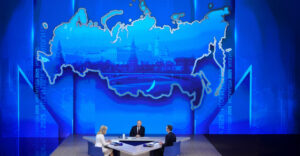In a country where literary censorship is official government policy, the fact that Iran has opened what could be the world’s biggest bookstore is all the more astonishing.
Located in the Abbasabad Hills in the north-east of the Iranian capital, the Tehran Book Garden was officially opened in July.
Its opening was described by Tehran mayor Mohammad Baqer Qalibaf as “a big cultural event in the country so that our children can make better use of this cultural and academic opportunity”.
The Book Garden hosts bookshops, an art gallery and 10 theatres and amphitheatres.
It also has a dedicated section for children and young adults that houses age-appropriate literature and offers a variety of activities aimed at encouraging reading.
According to Newsweek, more than 400,000 titles are available for children.
World beater?
Construction of the Tehran Book Garden was completed in 2016. It occupies a 110,000 square-metre site within the Abbasabad Complex, which also includes the Sacred Defence Garden Museum and the National Library and Archives of Iran.
The internal space hosting its bookstores, galleries and theatres measures 65,000 square metres.
If all of this indoor space is counted, then the book garden easily wins the title of the world’s largest bookstore.
The current Guinness world record holder is the Barnes & Noble Bookstore on Fifth Avenue, New York City. However, this US store, less than a quarter of the size of the Tehran Book Garden, closed its doors to customers in 2014.
Easing censorship
The Book Garden was first proposed back in 2004, due to the popularity of the Tehran International Book Fair showing a clear appetite among Iranians to both read and discuss books.
Following decades of literary censorship, Iran today is a country of 78 million people with just 1500 book shops.
In previous years publishers have been known to be banned and books confiscated at the book fair.
However, when Iran’s supreme leader Ayatollah Ali Khamenei spent time speaking with avant-garde publishers at the book fair in 2015, some believed it was a sign that restrictions on what could and could not be published within the Islamic Republic were being loosened.
The Financial Times credits the centrist government of president Hassan Rouhani with allowing Iran to be more culturally open.
Previously banned novels such as Tracy Chevalier’s Girl With a Pearl Earring, To Have and Have Not by Ernest Hemingway, and Dostoevsky’s The Gambler have all in recent years been published in Farsi.
Equally, the length of time it takes to vet books has shortened from several years to a few months.
However, censorship remains in place.
Despite the Islamic Republic’s Ministry of Culture and Islamic Guidance claiming that 8,000 books had been published in 2016, it last year introduced a new series of bans to counter a “Western cultural onslaught”.
Mohammad Selgi, head of book publishing at the ministry, said words such as wine, the names of foreign animals and pets, and names of certain foreign presidents were banned from publication.
These latest censures come in addition to a series of bans on Iranian authors introduced by the government of previous president Mahmoud Ahmadinejad. Books banned include Mahmoud Dowlatabadi’s prize-winning novel The Colonel, which takes a critical look at the fallout from the Islamic Revolution of 1979.
Ask me anything
Explore related questions







